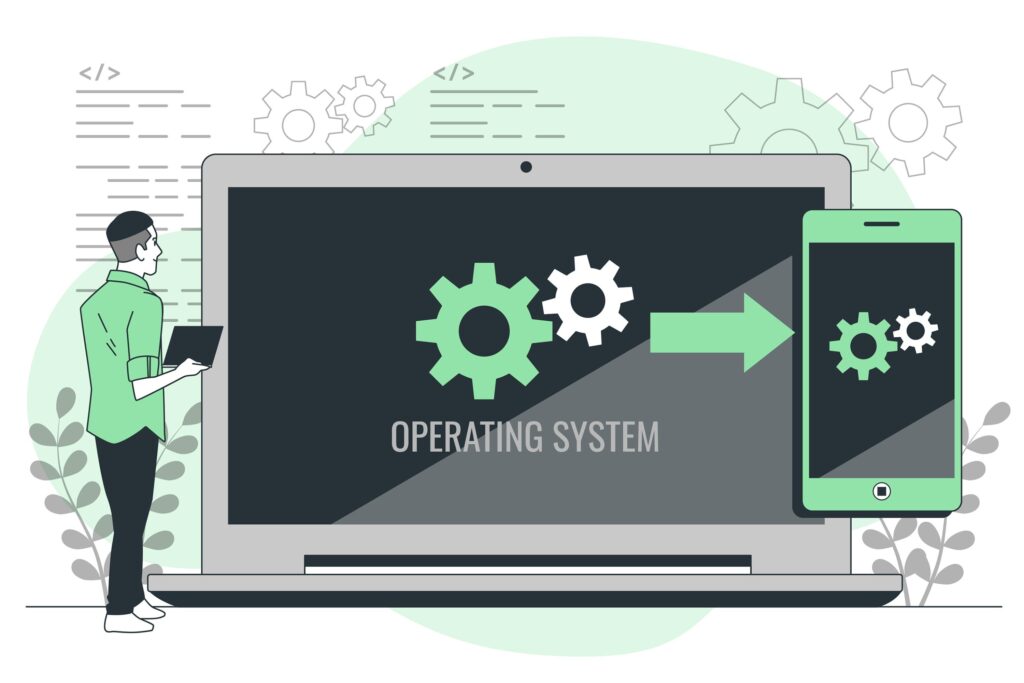In today’s interconnected world, where our lives are increasingly entwined with technology, the concept of a secure operating system (OS) has become paramount. An OS serves as the foundation upon which all other software and applications run, making its security imperative for safeguarding our digital lives. But what exactly is a secure OS, and why is it essential? Let’s delve into the world of secure operating systems and understand how they function as digital fortresses in modern computing.

Defining a Secure Operating System:
At its core, a secure operating system is designed with a primary focus on protecting the confidentiality, integrity, and availability of data and resources within a computing environment. It goes beyond just functionality and user experience, emphasizing the implementation of robust security mechanisms to guard against a plethora of threats, from cyberattacks to data breaches.
Key Features of a Secure OS:
A secure operating system encompasses several critical features that collectively contribute to its effectiveness in thwarting cyber threats:
-
Access Control: A secure OS enforces strict access controls, ensuring that only authorized users and processes can interact with sensitive data and system resources.
-
Authentication and Authorization: Robust authentication methods verify users’ identities, while proper authorization mechanisms determine the level of access they have to various system components.
-
Encryption: Data encryption is a cornerstone of a secure OS. It ensures that sensitive information remains unreadable to unauthorized individuals even if they manage to gain access to the system.
-
Secure Boot: Secure boot processes validate the integrity of the OS and its components during system startup, preventing the execution of malicious code or unauthorized modifications.
-
Audit and Monitoring: A secure OS provides comprehensive auditing and monitoring capabilities, allowing administrators to track system activity, detect anomalies, and respond promptly to security incidents.
-
Least Privilege: The principle of least privilege restricts users and processes to only the permissions and access necessary for their tasks, minimizing the potential impact of security breaches.
-
Vulnerability Management: Regular updates and patches are essential to address newly discovered vulnerabilities and ensure that the OS remains resilient against emerging threats.
-
Secure Networking: A secure OS implements robust network security measures, including firewalls, intrusion detection, and encryption of network communications.
-
Isolation: Secure OS designs often include sandboxing and containerization techniques to isolate applications and processes from each other, preventing the spread of malware and limiting the impact of breaches.
-
Secure Development Practices: The development process for a secure OS adheres to best practices, including code reviews, vulnerability assessments, and adherence to security standards.
The Importance of Secure Operating Systems:
The need for secure operating systems has never been greater, and here’s why:
-
Data Protection: Secure OSs safeguard sensitive data from theft, unauthorized access, and exposure. This is particularly crucial given the increasing volume of personal and business data stored digitally.
-
Mitigating Cyber Threats: Cyberattacks are evolving in complexity and scale. A secure OS serves as the first line of defense against threats like malware, ransomware, and phishing attacks.
-
Preserving Privacy: In an era of constant connectivity, secure OSs ensure that user privacy remains intact, preventing the unauthorized collection or sharing of personal information.
-
Critical Infrastructure Protection: Industries such as healthcare, energy, and finance rely on secure OSs to protect critical infrastructure from cyber incidents that could have far-reaching consequences.
-
Regulatory Compliance: Many sectors are subject to strict regulatory frameworks that mandate the implementation of security measures. Secure OSs assist organizations in meeting compliance requirements.
Examples of Secure Operating Systems:
-
Qubes OS: Qubes OS employs virtualization to compartmentalize different tasks and applications into separate virtual machines, preventing them from interfering with one another.
-
SELinux (Security-Enhanced Linux): SELinux is a set of security extensions to the Linux kernel, enforcing mandatory access controls to restrict the actions that users and processes can perform.
-
iOS: Apple’s iOS is known for its strong security features, including robust encryption, app sandboxing, and strict app review processes.
-
OpenBSD: OpenBSD focuses on code correctness and security, with a dedicated team performing extensive code audits and emphasizing secure defaults.
-
Windows 10 Enterprise: Microsoft’s enterprise-focused version of Windows 10 includes features like BitLocker encryption, Windows Defender Firewall, and Windows Hello authentication.
Challenges in Building Secure OSs:
Creating a secure operating system is a complex endeavor that faces several challenges:
-
Trade-offs with Usability: Striking a balance between security and user-friendliness is a challenge. Overly stringent security measures can hinder usability and productivity.
-
Constant Evolution of Threats: As cyber threats evolve, OSs must adapt and respond promptly to new attack vectors and vulnerabilities.
-
Resource Constraints: Resource-constrained environments, such as embedded systems and IoT devices, require tailored security solutions that don’t compromise performance.
-
Vendor Collaboration: OS security often involves collaboration with hardware manufacturers, developers, and third-party vendors to ensure end-to-end security.
In Conclusion:
In an era where technology permeates every aspect of our lives, secure operating systems play a vital role in providing a solid foundation for digital security. They serve as the bedrock upon which our applications, data, and interactions are built, ensuring that our digital experiences are not marred by cybersecurity threats. As technology continues to evolve, the ongoing development and adoption of secure operating systems will remain an essential aspect of the broader effort to create a safer and more secure digital world.